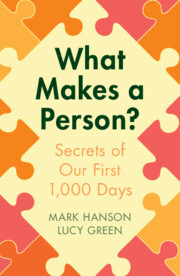1 - Now You Are Two: the End of the Beginning?
Published online by Cambridge University Press: 03 November 2022
Summary
None of us can really remember anything about our lives before the age of two years. How much of what makes us what we are has been set by that time? We challenge the widely-accepted idea that what we are is ‘determined’ by inherited genes and we start to explore how interaction with parents/carers establishes our behaviour. We use examples drawn from fiction and the real world to explore how the brain learns from the conditions in early life. We explain why this adaptability underpins development of our senses, our behaviour and our self-control. This introduces control as one of the themes of the book – how much we are in control of our bodies and how control develops based on environmental cues. We question what effect today’s exposure to digital media may have on the developing brain, and explore new ideas about the development of defence mechanisms, from immunity to the gut microbiome. Through the quote from JM Barrie, author of ‘Peter Pan’: ‘You always know after you are two. Two is the beginning of the end’, we ask whether age two is the beginning of the end or the end of the beginning of development.
Keywords
- Type
- Chapter
- Information
- What Makes a Person?Secrets of our first 1,000 days, pp. 1 - 37Publisher: Cambridge University PressPrint publication year: 2022

